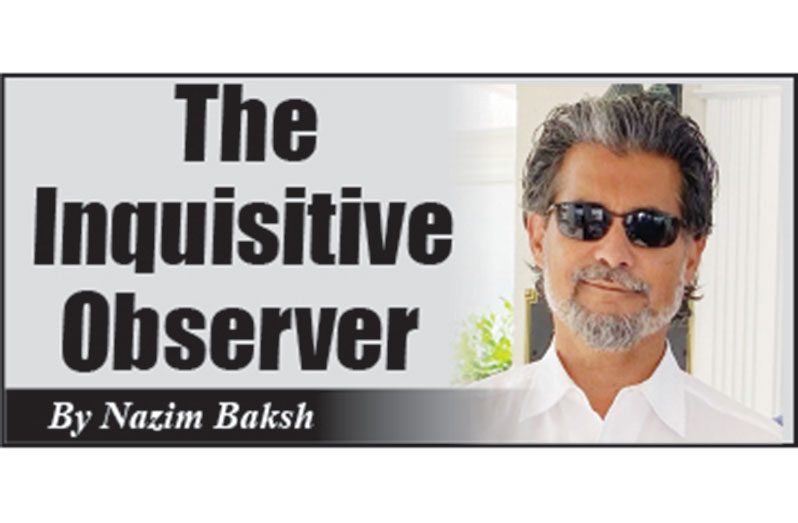THE use of religious symbolism in the current military escalation between India and Pakistan is deeply troubling. After last month’s terrorist attacks in Kashmir that killed 25 Indians, Delhi launched retaliatory strikes into Pakistani territory, calling it operation “Sindoor” – a reference to the red powder Hindu women wear to signify marriage. The New York Times reported that India’s message was clear: it intended to avenge the widows who lost their husbands in Kashmir.
Pakistan responded with its own operation, naming it “Bunyan Marsoos,” a phrase taken from a Quranic verse (61:4) describing believers who fight in God’s cause as a united, solid structure. If this conflict spirals further, readers will no doubt hear frequent references to the Line of Control (LoC), the de facto border dividing the disputed region of Kashmir between India and Pakistan and which goes back to the 1947 partition, when India and Pakistan gained their independence from Britain.
The United Nations does not regard the LoC as a legally recognised international boundary. It was established in 1949 after the first war between India and Pakistan, but was only formally designated the LoC following the 1971 war between India and Pakistan. Delhi administers Jammu, Kashmir and Ladakh while Islamabad administers Azad Kashmir and Gilgit-Baltistan. Whichever side of the LoC one happens to be, regardless of the season, this is one of the most stunningly beautiful places on earth. Even in the heart of winter, when I visited, its breathtaking landscapes at the foothills of the Himalayan mountains left a lasting impression.
During Mohammad Zia-ul-Haq’s presidency (1978-88), his administration largely ignored militant groups in Pakistan that were carrying out attacks in Indian-administered Kashmir. While producing my first documentary for the Canadian Broadcasting Corporation’s The Fifth Estate, we interviewed former senior officials from Pakistan’s army and its Inter-Services Intelligence (ISI), including General Hamid Gul. He told us that in the decade following the Russian invasion of Afghanistan, their sole priority, shared with Western allies, was arming and training the Afghan Mujahideen.
Security experts believe that Islamabad’s military focus on defeating the Soviets in Afghanistan in the 1980s allowed Pakistani militant groups to operate freely, including launching attacks in India. General Zia’s regime used these groups as a recruitment agency for fighters on the Afghan frontlines. Thousands were trained and armed by the state to serve its strategic interest abroad–better, in the eyes of the regime, to deploy them overseas than risk unrest at home.
On behalf of The Fifth Estate, I managed to score the only interview Mubarak Ali Shah Gilani ever conducted with a media outlet. Although he denied it, video evidence obtained by the FBI showed Gilani, spiritual leader of Jamaat-al-Fuqra, openly recruiting Americans, including a fair portion of Caribbean-born Muslim converts, to train and fight for the liberation of Indian-controlled Kashmir.
Years after the Soviet withdrawal from Afghanistan in 1989, and even after over two decades since 9/11, Afghanistan has remained Pakistan’s number one national security priority. The bulk of Pakistan’s resources has been spent on policing the Durand Line, the 1,640-mile border that divides the two countries, which meant fewer resources were dedicated to securing the 460-mile LoC.
And it was during this period that a plethora of militant Kashmiri-oriented terror organisations began to flex their muscles. One of the most odious ones was Lashkar-e-Taiba (LET), which emerged in the late 1980s. It changed its name and dabbled in humanitarian projects to avoid sanctions, but in 2008, ten LET militants staged a vicious terror assault on several Mumbai’s prominent landmarks, including the prestigious Taj Mahal Palace Hotel.
By coincidence, a year earlier, I had dined at this hotel and marvelled at its Mogul-era architecture and the hospitality of its staff. LET terrorists laid siege to the hotel for six days, during which time they violently assaulted staff and guests. The images were so shocking that they captured attention around the world. It even inspired “Hotel Mumbai,” a docudrama that recounts the events of the siege from the perspective of the hotel’s guests and staff.
India refers to the terror attacks as 26/11, and it is seared into their national conscience. In all, some 174 people, including 20 security force personnel and 26 foreign nationals, were killed. More than 300 were injured. Nine of the 10 LET terrorists were also killed, and one was arrested.
I co-produced a documentary on the siege of the Taj Hotel based on a firsthand account of the surviving LET recruit. At the time, it was not clear what role Pakistan-born Tahawwur Rana, a Canadian citizen and Chicago businessman, played in the broader conspiracy. However, he was convicted in the US for supporting a terror group and sentenced to 14 years in prison in 2013. Released in 2020 due to ill health, he was re-arrested a year later when India sought his extradition. After his meeting with Prime Minister Narendra Modi, President Donald Trump approved his extradition.
On April 10, India’s National Investigation Agency confirmed that 69-year-old Rana’s extradition had been successful, and twelve days later, militants carried out the horrific attacks in Kashmir. Only time will tell whether there is evidence linking Rana’s extradition to the attacks and what role exactly Pakistani-based militant groups played.
DISCLAIMER: The views and opinions expressed in this column are solely those of the author and do not necessarily reflect the official policy or position of the Guyana National Newspapers Limited.



.jpg)








